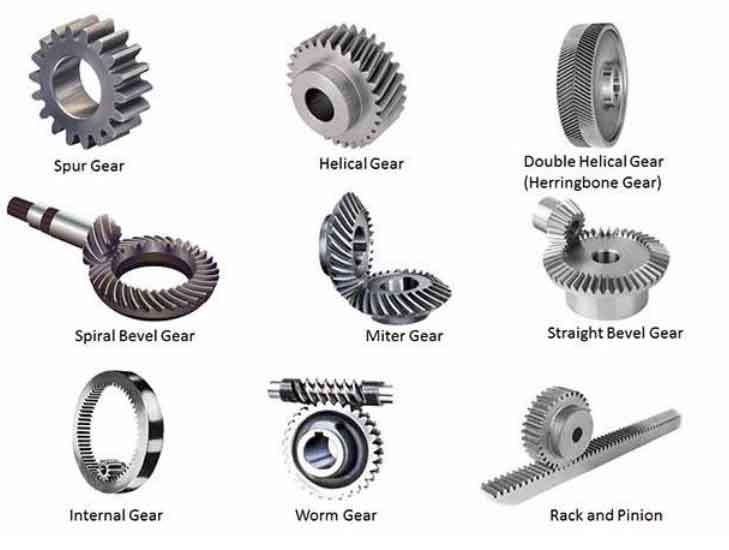Bevel gears and herringbone gears are two different types of gears used in mechanical systems to transmit power between shafts arranged at various angles. Both gear types have their unique features, advantages, and disadvantages. This comparative analysis will help you understand the differences between these two gear types.

- Geometry and Design:
- Bevel Gears: Bevel gears have conical shapes and are designed to transmit power between shafts intersecting at an angle, usually 90 degrees but can also be other angles. They have tooth profiles that are straight or curved (spiral bevel gears) and are mounted on shafts that intersect.
- Herringbone Gears: Herringbone gears are a type of helical gears with a special tooth profile. These gears have teeth that resemble a ‘V’ shape or the way fishbones are laid out. The teeth are inclined in two opposite directions, creating a symmetrical pattern. They are usually used to transmit power between parallel shafts but can also be used for non-parallel shafts.
- Transmission of Forces:
- Bevel Gears: In bevel gears, the forces applied on the gears are primarily axial, which means they act along the axis of the gear. These forces are carried by the gear teeth, causing them to engage and transmit power from one shaft to another.
- Herringbone Gears: Herringbone gears transmit both axial and radial forces due to their unique tooth geometry. The double-helix arrangement of their teeth results in a balanced load distribution, ensuring smooth operation and reduced vibrations.
- Efficiency and Noise:
- Bevel Gears: Bevel gears can be highly efficient, especially in the case of spiral bevel gears. However, they tend to produce more noise compared to herringbone gears, particularly when using straight bevel gears. This noise generation can make them less suitable for high-speed applications.
- Herringbone Gears: Herringbone gears are known for their smooth operation, reduced vibrations, and noise reduction. The balanced force distribution helps decrease the level of noise, making herringbone gears suitable for high-speed and high-power applications where quiet operation is necessary.
- Manufacturing and Cost:
- Bevel Gears: The manufacturing process for bevel gears, especially spiral bevel gears, can be complex and requires specialized machinery and skilled operators. This complexity in manufacturing often results in a higher cost for bevel gears compared to other gear types.
- Herringbone Gears: Herringbone gears also require specialized machinery and skilled operators for manufacturing, but their production is usually less complex than that of bevel gears. However, the cost of producing herringbone gears may still be higher than that of simpler gear types, like spur gears, due to their unique tooth profile.
- Applications:
- Bevel Gears: Bevel gears are commonly used in applications where shafts need to transmit power at an angle, such as automotive differentials, helicopter transmissions, and industrial machinery.
- Herringbone Gears: Herringbone gears are often used in high-power and high-speed applications where a smooth, quiet operation is needed. These gears can be found in gearboxes for heavy machinery, marine propulsion systems, and power transmission systems in rolling mills.
Bevel gears and herringbone gears have different design characteristics and are suited for different applications, depending on factors such as the angle between shafts, requirements for noise and vibration reduction, and efficiency needs. Bevel gears are more suitable for transmitting power between intersecting shafts at an angle, while herringbone gears are advantageous for parallel shafts requiring smooth, high-power, and high-speed operation.
